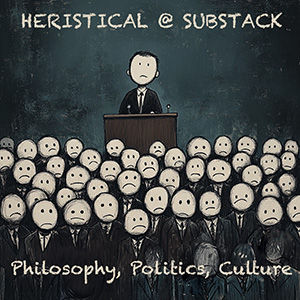
The practice of philosophy can be found in nearly all places, is done by nearly all people, and has vast and distinct cultural traditions. In so many words, philosophy is diverse. Yet, the recognition of this diversity is still absent in many settings where philosophy is taught, learned, and practiced. Philosophy departments lag behind their peers in other humanities departments in both demographic representation and the representation of the diversity of traditions. The content of our undergraduate courses can shape the interests that students develop; after all, it’s hard to become interested in a topic that is never presented as an available option. Even more than this, because each instructor is only one person, with only one set of experiences, it can be hard for us to see a philosophy class as our students might. This was one of the first things I learned about teaching in graduate school: you shouldn’t assume that your students are like you. I learned this in the context of learning to teach general education students, who come to the philosophy classroom with vastly different aims and goals than I did as a student who was interested in philosophy as an incoming college student. However, the lesson stands in for all sorts of differences between instructors and students — avoiding assumptions about who philosophy students are (and what their views and positions might be) can help us develop better philosophy education practices.
While much of the professional focus on diversity and inclusion in philosophy focuses on the disproportionate demographic representation among professional philosophers, the vast majority of philosophy in the US is taught at small colleges and universities, in the context of undergraduate education. So, while the demographic composition of professional philosophy remains relevant to most philosophy students, it isn’t the main concern driving what happens in undergraduate classrooms. It has, however, been shown that professors who students identify with can help students to feel comfortable in the classroom. This gives us some reason to ensure that a range of demographic diversity is represented in our staffing of classes, but in itself, it cannot tell us how to design or teach those classes.
Diversity in philosophy classrooms can mean many things: demographic diversity, diversity of thought, or diversity of traditions. All of these elements can work together to create an environment where students are introduced to philosophy, in its historically diverse forms, in accessible ways that don’t alienate them from further study. I assume that most philosophy instructors are, at least in part, motivated by the fact that philosophy brings something important to their lives, they believe their courses benefit students (perhaps just intellectually but maybe also personally), and they want students to take philosophy and as much of it as is practical or possible. To accomplish those goals requires that we take seriously why students end up in our courses and how they engage with them once they arrive.
The philosophy classroom should be an open and welcoming place for all students. This, of course, does not mean that they won’t experience discomfort: learning is a process sometimes requiring the creation and maintenance of discomfort. However, the ability to engage with the course content and with peers is essential for student learning and excitement about philosophy. For this reason, classrooms should be made as accessible as possible for students: there should be multiple ways of engaging with the course (such as not prioritising verbal participation in class above other forms of classroom engagement) and course materials should follow standards of accessibility (alternative ways to access both visual and audio content, for example). Philosophy classrooms are by far not the only places where students meet inaccessible materials, but philosophy instructors can put into practice some principles of universal design that could allow greater engagement of course materials and accessibility.
One reason for philosophy’s inaccessibility may be that philosophy in the anglophone tradition highly prizes “rigour” — generally thought of as clarity, the development of valid or sound arguments, holding consistent positions and the ability to rationally respond to criticism. When “good philosophy” or even just “philosophy” itself are taken to require this kind of “rigour” it is easy to dismiss or exclude traditions of philosophy with different internal norms of judgement. As Marcus Arvan points out, most of what we would consider to be canonical western philosophers did not develop works that are rigorous in these ways, but they seem to be given a pass, given their historical status as precursors to the anglophone tradition. Philosophical works that lack the same internal standards of judgement or the status as historical predecessors to contemporary anglophone philosophy are often excluded from the undergraduate classroom for being insufficiently right (as if the only thing we have to learn from a historical work of philosophy is the truth) or insufficiently philosophy-ish.
There are still members of the profession who refuse to accept the notion that philosophy can be done in different modes and that traditions of philosophy not typically associated with “canonical” philosophers are valuable for study and for teaching. While these attitudes aren’t directly linked to a lack of demographic diversity in philosophy (and teaching outside the traditional canon hasn’t been shown to improve these numbers) these attitudes impoverish the widespread historical and contemporary engagements with philosophy — they make the world smaller and less full of wonder and interest than it otherwise could be. Though, not every instructor who fails to teach outside the canon holds these views.
One explanation for the dearth of philosophy instruction outside the anglophone tradition is that faculty themselves likely have not been trained in plural traditions in philosophy, leading to a cycle of lack of exposure and lack of education that continues through generations of philosophers. While philosophy instructors may want to consider if they have a duty to become more well-rounded or knowledgeable, there are some actions we can all take (short of developing a new teaching competence) to develop philosophy classrooms that don’t unintentionally exclude students. Often, training to develop new teaching competencies is not incentivised or well-funded. Because these areas are not often taught, there is little demand, which means there is both little training, little opportunity to receive training, and little incentive to spend one’s time developing these competencies. Troublingly, we also have startlingly little data about what actually works, in terms of the leaky pipeline in philosophy. We have a lot of data concerning which interventions are not supported by data. This means that instructors are still largely on their own, when developing the non-exclusionary philosophy classroom.
Because the norms of philosophy favour the status quo, intentional choices for the philosophy classroom are often required to make the classroom inclusive, the materials diverse, and the content and skills of philosophy accessible. This starts with building syllabi. There is no shortage of projects aimed at guiding philosophy instructors to develop more diverse syllabi. Luckily, there are now a plurality of guides for teaching areas in philosophy that have been traditionally excluded or neglected in the anglophone tradition. There are plenty of resources available online, such as the Diversity Reading List and the APA Diversity and Inclusion Syllabus Collection (available to all, not just APA members). Though, it’s also important to recognise that texts from outside traditions that instructors find familiar may present teaching challenges. Students deserve to learn about plural traditions from scholars who are knowledgeable about them. This means that adding works from traditions new to the instructor to a reading list for a course must also be accompanied by a willingness and ability, on the part of the instructor, to become knowledgeable about the text and the historical tradition in which it is located. While the best way to add this kind of diversity to our classrooms is to hire colleagues who are experts in these areas (who can, if working at the appropriate institutions, go on to train graduate students in pluralist ways), often this is not prioritised by administrations, especially during times when administrators push austerity. It is easier to provide students with subject experts in departments that are larger and institutions that are more well-funded.
Worse still, this means that greater burdens in this area will fall on faculty who are likely already highly burdened, by being at institutions with less generous financial support and wavering financial stability. Instructors at these institutions may be contingent or simply overloaded with tasks, given the lack of funding. In this context, the injunction to simply learn about varied and new to them forms of philosophical practice and philosophical texts seems like something that cannot be met.
As I’ve argued, accessibility in the philosophy classroom extends beyond merely following the guidelines provided by our university’s disability services but can include things like asking students their names. Often, trans students may have names that differ from the formal registry of their name. This has the double benefit of catching students who use nicknames or shortened versions of their given names. Inclusive practices often have these types of benefits: strategies implemented to accommodate a marginalised group can provide unintended benefits for others as well. Often, first generation college students may find that syllabi are full of unfamiliar terms (even “syllabus” may be one of them) — explaining these can have benefits for everyone in the class: it may allow you to explain the concept of office hours and encourage students to attend them.
One potentially underrated strategy for the inclusive philosophy classroom is to create systems that can improve fairness in grading. This could include anonymous grading, or if that isn’t feasible or desirable (for instance, if students write drafts, then have a conference with the instructor, prior to revision) making grading more mechanical. Making grading more mechanical involves providing students with a numerical rubric or at minimum a checklist for different grades. This can help students to understand exactly what your expectations are, but also guide instructors in grading more fairly or in a less impressionistic way (that could be influenced by knowledge about the student).
Much like how some people talk about young children noticing things that parents think are covert, students will notice aspects of our classes that may elude faculty attention. Some studies have found that students recognise and identify when syllabi fail to include women as authors, and this recognition among students also contributes to their willingness to continue in more philosophy courses. To that end, diversifying the authors of texts taught can help provide models for students, who may come to see philosophy as something that “people like me” don’t do. This can be especially important when working in contexts that don’t provide a variety of role models in philosophy for students: if every instructor shares certain markers, students who lack them can come to feel like they don’t belong. Our syllabi can be a preliminary way of addressing these feelings. This does not mean that our syllabi need to be composed, for instance, of 50% women authors, or even a proportional representation of gender found in the students in the class. Rather, 30% of texts composed by women on a syllabus was sufficient to change how students perceived the gender bias of the course composition of readings.
The best evidence we have for what works in building an inclusive and pluralist philosophy classroom says that we should create environments where students feel comfortable and able to identify with the project of philosophy. This provides all of us with reason to seek out an accurate representation of plural traditions in our undergraduate classrooms, be mindful of how we interact with students in the classroom (and even design the classroom space!), and consistently work to develop practices that don’t leave students feeling excluded from the space of philosophy. The methods, research, and suggestions I’ve made for practical ways to implement are all covered in the product of a Minorities in Philosophy (MAP for the Gap) project available here: phildiversity.weebly.com. This website was the result of a cohort of interested graduate students dedicated to teaching by using evidence-based practices. On it, you can find further research, tips for developing an inclusive classroom, and links to other sites with information, sample syllabi, potential textbooks, etc.
Of course, building non-exclusive classrooms is, like much else, in academia and the broader world, made easier with monetary support. In many ways, individual faculty learning and teaching plural traditions that were not a focus of their training is an individual Band-Aid on the bullet wound of philosophy’s structural exclusions and academia’s slide into ever harsher austerity measures. There are also familiar problems with the economic lens. There are a great deal of well-funded philosophy programs that lack faculty with expertise in traditions outside of the anglophone or continental ones, and they show no intention of changing. However, if you are a member of a well-funded philosophy department, it is worth organising on behalf of diversifying the traditions represented among the faculty interests.
In this sense, diversifying philosophy, in its composition of scholars, the traditions represented, and positions argued for will likely be a slow and difficult process for both individual and structural reasons. Though, there are many low effort, low budget methods that can be implemented in all of our classrooms to make them less exclusionary. Developing syllabi with adequate gender representation, considering how to include plural traditions in our classrooms (and developing proper levels of familiarity and knowledge of the traditions, histories, and problems these texts engage with), creating assignments and grading in ways that mitigate the effect of our prejudices, and ensuring class discussions don’t treat all students as if they have had the same life experiences. Structurally, diversity in philosophy requires not merely shifts to cultural norms concerning what “counts” as “real philosophy” or what is worthy of inclusion in our curricula, but also monetary investment. Members of the profession who work at academic institutions not suffering from short staffing, adjunctification, or overloaded educators can work toward building less exclusive and exclusionary departments that manifest the variety of philosophy throughout history. Those who do not are then burdened with more personal labour — to ensure that they become competent to represent these traditions for students. In both cases, structural problems require structural change and strong labour solidarity, as well as eliminating precarity, and resisting austerity measures can go some way toward allowing us to ameliorate the historical exclusions that philosophy as a discipline has enacted.
Rochelle DuFord is an assistant professor of philosophy at University of Hartford. She’s currently finishing her first book, Solidarity in Conflict: A Democratic Theory. Her interests include critical theory, social and political philosophy, and feminist thought. The methods, research, and suggestions for practical ways to implement positive changes are covered in the product of a Minorities in Philosophy (MAP for the Gap) project available here: phildiversity.weebly.com.

